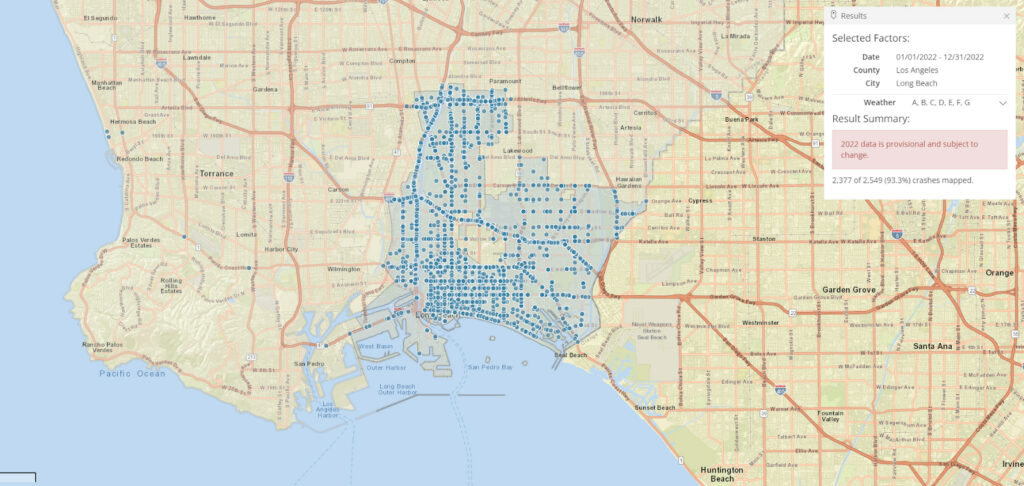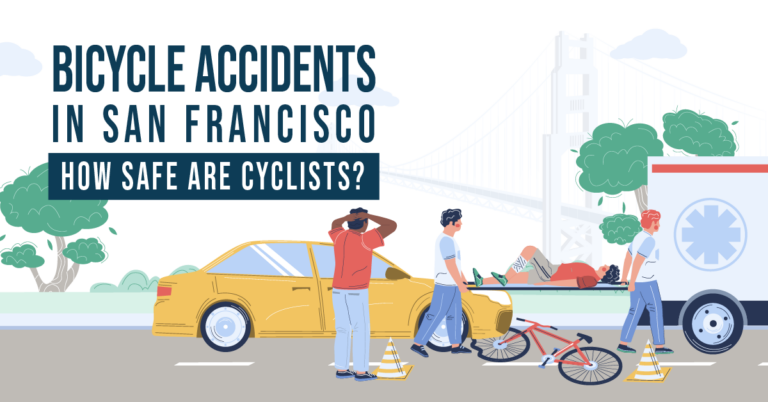
Car accidents caused by weather situations are a problem in many cities worldwide, including Long Beach, California. Long Beach can experience different weather conditions throughout the year, which may pose challenges for drivers.
Long Beach car accidents are a serious concern, with rainy conditions, fog, and wind among the top culprits. As a resident of Long Beach, you should know the weather conditions and take extra precautions when driving under challenging conditions.
It would also help to know that you may be eligible for compensation if you or a family member were involved in a weather-related car accident.
Here’s an overview of weather-related car accident statistics in Long Beach and the different conditions that may cause them.
Statistics on Weather-Related Car Accidents in Long Beach

Like any other city in California, Long Beach records traffic accidents due to weather conditions within its jurisdiction.

- In 2022, there were 2,549 weather-related crashes in Long Beach country alone.
- Among them, 54.1% or 1,379 cases involved injuries (complaints of pain).
- Compared to the 2021 data of 2,909 total accidents, there was a decrease in the number of weather-related crashes.

- The graph above shows the breakdown of victims and victim degree of injury—60.22% of the victims had possible injuries, 32.53% had suspected minor injuries, 5.91% had suspected major injuries, and 1.35% or 49 individuals were killed.
- It’s worth noting that Long Beach weather conditions are relatively mild compared to other areas in California. The city’s location on the coast, elevation, and Mediterranean climate contribute to its weather patterns.
However, despite its mild weather, Long Beach still experiences significant weather changes that impact driving safety.
3 Types of Weather Conditions in Long Beach That Affect Driving
1. Rain
Long Beach receives an average of 12 inches of rainfall annually, with most precipitation occurring between November and March. It’s no secret that rainy conditions can make driving more challenging due to reduced visibility and slippery roads that may contribute to accidents.
Hydroplaning is one of the most dangerous situations that can arise during wet weather. It occurs when water accumulates on the road surface, causing the vehicle’s tires to lose contact with the road and making it difficult to control the car, especially at high speeds.
Safety Tip: To prevent accidents in rainy conditions, reduce your velocity and increase the distance between yourself and the vehicle in front. This tip will give you more time to react to any sudden changes in road conditions.
2. Fog
Fog is common in Long Beach, which can significantly threaten drivers. The foggy conditions are most prevalent during the summer, especially in the morning and evening. It can reduce visibility to just a few feet, making it challenging to navigate the roads safely.
Safety Tip: To help mitigate the risks associated with driving in foggy conditions, the National Weather Service (NWS) issues fog advisories, notably when visibility is less than a quarter of a mile.
The NWS strongly suggests using low-beam headlights when driving in fog to improve visibility and reduce the risk of accidents. Experts don’t recommend high-beam headlights, which can reflect off the fog and make visibility even worse.
Foggy conditions can also make it difficult to judge distances and react to sudden changes in road conditions, so drive slower. Driving slower gives you more time to respond to any dangers.
3. Wind
Long Beach experiences strong winds, particularly between October and April or during the Santa Ana winds season. High winds can affect your control over your vehicle and lead to accidents.
Wind gusts can push a vehicle off course or cause it to tip over, especially if you drive high-profile vehicles like trucks, RVs, and buses. In addition, sudden gusts of wind can catch you off guard, leading to sudden steering wheel jerks or loss of control.
Safety Tip: Maintain a safe speed. Slow down to a pace that allows you to maintain control of your vehicle and react to sudden changes in driving conditions.
Also, avoid abrupt movements such as swerving or turns. These movements can cause your vehicle to lose control, particularly in strong winds. Holding the steering wheel firmly with both hands is required to maintain control of your car.
Stay alert for any warnings or advisories regarding the weather conditions. If the weather conditions become too severe to handle, it’s best to pull over to the side of the road and wait until the winds subside.
Staying Safe on the Road
Long Beach’s weather can pose a risk to drivers, but with the proper precautions, you can avoid accidents. Rain, fog, and wind can limit visibility and affect your control over the vehicle, so it’s essential to drive cautiously and to stay prepared for changing weather conditions.
Remember to maintain a safe speed, increase the distance between vehicles in wet conditions, use low-beam headlights in fog, and hold the steering wheel firmly in high winds.
If you’ve been involved in a weather-related car accident and need a car accident lawyer to guide you, contact us at RMD Law. We have a team of experienced Long Beach car accident lawyers ready for the tireless representation you deserve.
Contact us today for a free evaluation!
- Bicycle Accidents in San Francisco: How Safe Are Cyclists? - July 10, 2023
- 6 Ways Posting on Social Media Can Hurt Your Personal Injury Claim - July 5, 2023
- DUI Crashes in Sacramento: 6 Significant Numbers You Should Know - July 3, 2023


